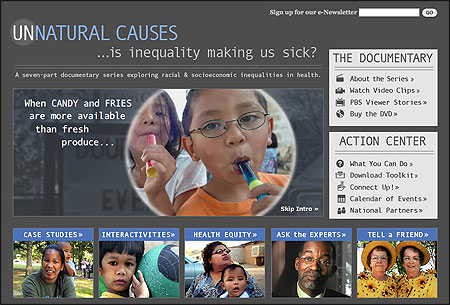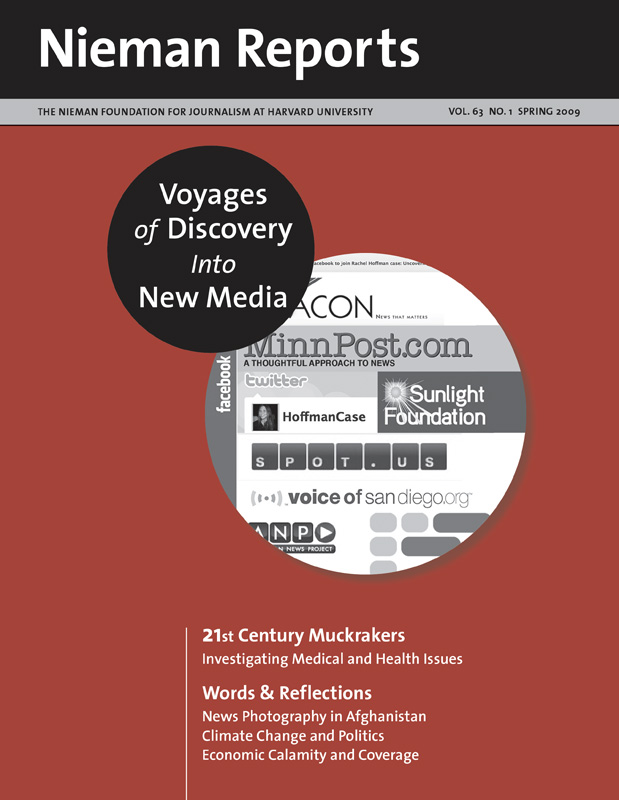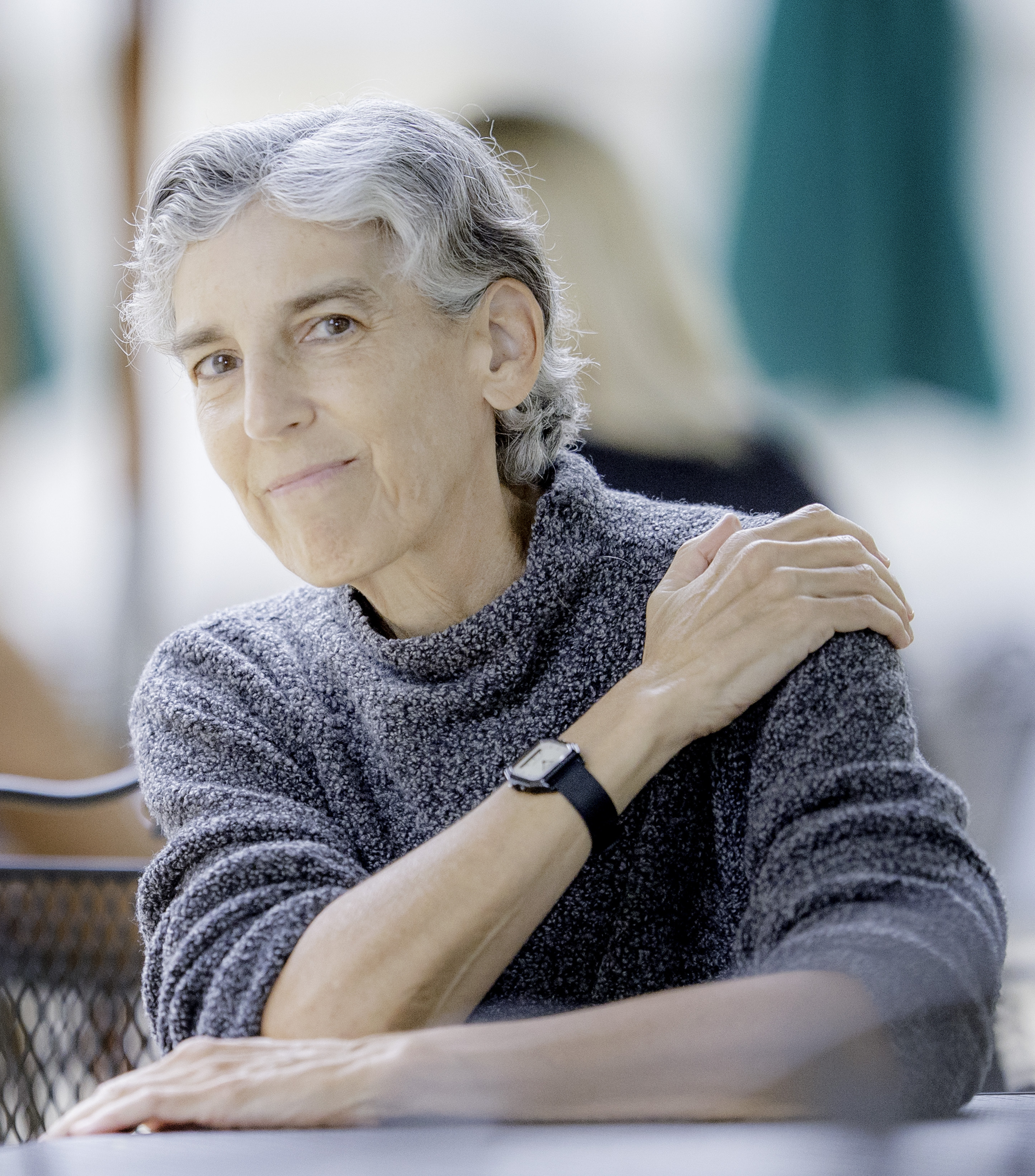
Fruits and vegetables, daily exercise, and high-tech medical care won’t necessarily keep you healthy. What will, more likely, is a decent income, a good education, strong community ties, feeling safe from bias and crime, being able to control your day and your destiny, and other so-called “social determinants of health.” Put simply, health and disease are stamped not by lifestyle, but by life. The epidemiological evidence, building over decades, is clear.
“Unnatural Causes: Is Inequality Making Us Sick?”—a winner of the 2009 Alfred I. duPont-Columbia University Awards for broadcast journalism—digs deep into medical and public health research to portray both the layered complexity of the social determinants of people’s well-being and the personal tragedies that follow when policymakers all too often fail to factor in such critical information.
Yet the four-hour, seven-part series, broadcast by PBS in the spring of 2008, goes further. It was conceived not merely as a prime-time educational feature but as a spark plug for social change. Its long afterlife as a tool for health activists—with more than 12,000 screenings since its original airdate and a growing list of citizen and government initiatives inspired by the film—has made it a touchstone in the unfolding debates about how to improve America’s deep health inequities.
Consider some facts:
- African-American women with a college degree have higher rates of delivering low birth weight infants and infants who die at birth than do white women who are high school dropouts.
- The longer your parents owned a home when you were growing up, the less likely you are to catch colds as an adult.
- The higher your income, the less your body releases the potentially damaging stress hormone cortisol.
Biology, in other words, is socially patterned. Though America’s hyper-individualistic culture insists that we are each solely responsible for our well-being, research shows that individual behaviors—such as exercise, cigarette smoking, alcohol abuse, eating habits—exert a comparatively small effect on health status, despite what we might believe from the daily doses of health reporting that we receive. The strongest predictor of health is class position, whether measured by income, schooling or occupation. The behavioral choices we make reflect the choices we have—and those choices, in turn, hang on larger social, political and economic structures.
“Unnatural Causes” documents this challenging idea through story after story depicting the bodily toll of racism, poverty, joblessness, crime, job stress, cultural dislocation, and other societal ills. It brings stacks of scientific data to life—deftly cutting between bar charts, functional medical imagery, atmospheric street shots, and intimate family scenes.
One of the more gripping segments, titled “Bad Sugar,” describes the stunning prevalence of diabetes in the Tohono O’odham and Pima Indian tribes of southern Arizona. For the past 40 years, the Tohono O’odham people have suffered the highest rates of Type II diabetes in the world; 50 percent of adults are diagnosed with the disease. Yet for centuries, diabetes was unheard of in the tribes, which thrived self-sufficiently on tepary beans, cholla buds, local game, and crops irrigated by rain and ground water.
What changed? Everything. Beginning in the late 19th century, the U.S. government dammed the Gila River to divert its life-giving water to white farmers, ranchers and miners, and later to Sunbelt swimming pools, golf courses, and artificial lakes. As a result, the Native Americans, unable to grow food or develop economically, starved. To make amends, the U.S. military showered the tribes with free commodity surplus items: white flour, cheese, refined sugar, lard, canned goods. Decades of federal cynicism served up a diabetic’s nightmare.
So much for the primacy of personal choice. At the end of the segment, Tohono O’odham artist and activist Terrol Dew Johnson—a passionately engaged young man with diabetes—tries to strike an upbeat note (and unwittingly supplies the film’s title): “I still see hope; I don’t have to die of diabetes,” he says uncertainly. “I’ll die of some natural cause ….”
Awareness and Action
Unnatural causes of death are rooted in injustice; they aren’t inevitable. So compelling is this truth for Larry Adelman—codirector of California Newsreel and the film’s creator and executive producer—that well before the cameras started rolling, he envisioned the series as the seed of a national health equity movement. What Adelman terms the “Big Three”—medical care, behavior and genes—now dominate the way we think about health and how this subject is usually covered by the press. He and his colleagues drew up a plan to topple those pillars of conversation.
They recruited scientific advisors to critique the film’s rough cuts. They established an outreach advisory board—a brain trust of public health leaders and advocates—to work on crafting messages and building a public engagement campaign. And they created a wealth of companion materials to sow the ground for action: community action toolkits, discussion guides, policy primers, backgrounders, quizzes and handouts. Such tools would be used in trainings, public dialogues, town hall meetings, policy forums, and media outreach.
Has it worked? “There isn’t anybody I talk to in public health who hasn’t heard of this film,” said Richard Hofrichter, senior analyst at the National Association of County and City Health Officials and a scholar on the history of public health movements. “It’s had an impact that I don’t think can be measured—the conversations, the startled responses. Once you have an insight about something, it can’t be undone.”
Hofrichter explained why he believes this film succeeds: “How is public consciousness raised? Through posing contradictions, asking uncomfortable questions, tracking back and asking: Why are things the way they are? What this film supplies is an overarching narrative. You want to get away from a laundry list of health policies. You want to be able to see within any policy what the health impact is.”
RELATED ARTICLE
See “Spreading the News” about the film’s use in public health settings.
-Madeline DrexlerAnother measure of success has been the film’s reach with its findings. “Screenings have already surpassed the metrics we set for the series,” Adelman said. “We never anticipated it would be used so widely or that the health equity movement would grow so quickly.”
“The real subject of a film like “Unnatural Causes” is not what’s depicted on the screen—it’s the audience. You want to engage them, you want to provoke critical thinking, and most of all you want to redirect their locus of attention off the screen and back upon themselves and their own situation.”
Health policies do matter, and Adelman and his colleagues clearly support a range of reforms that their film—and the research they based it on—indicates would benefit both health and justice: living wage laws, progressive tax structures, investment in public schools and low-cost housing, paid family leaves and sick days, increased job autonomy, nutritious food for all—and, yes, universal health care.
Asked about his next film project, Adelman said he has none. For now, he is focusing all his energy on a national health debate. “We hope that the film ages quickly—that it will be eclipsed by events,” he said. “My fear is that five years from now, it will be just as germane as it is today.”
Madeline Drexler is a Boston-based journalist, specializing in science, medicine and public health. She was a 1996-1997 Knight Science Journalism Fellow and is the author of “Secret Agents: The Menace of Emerging Infections,” published by Penguin in 2003.



